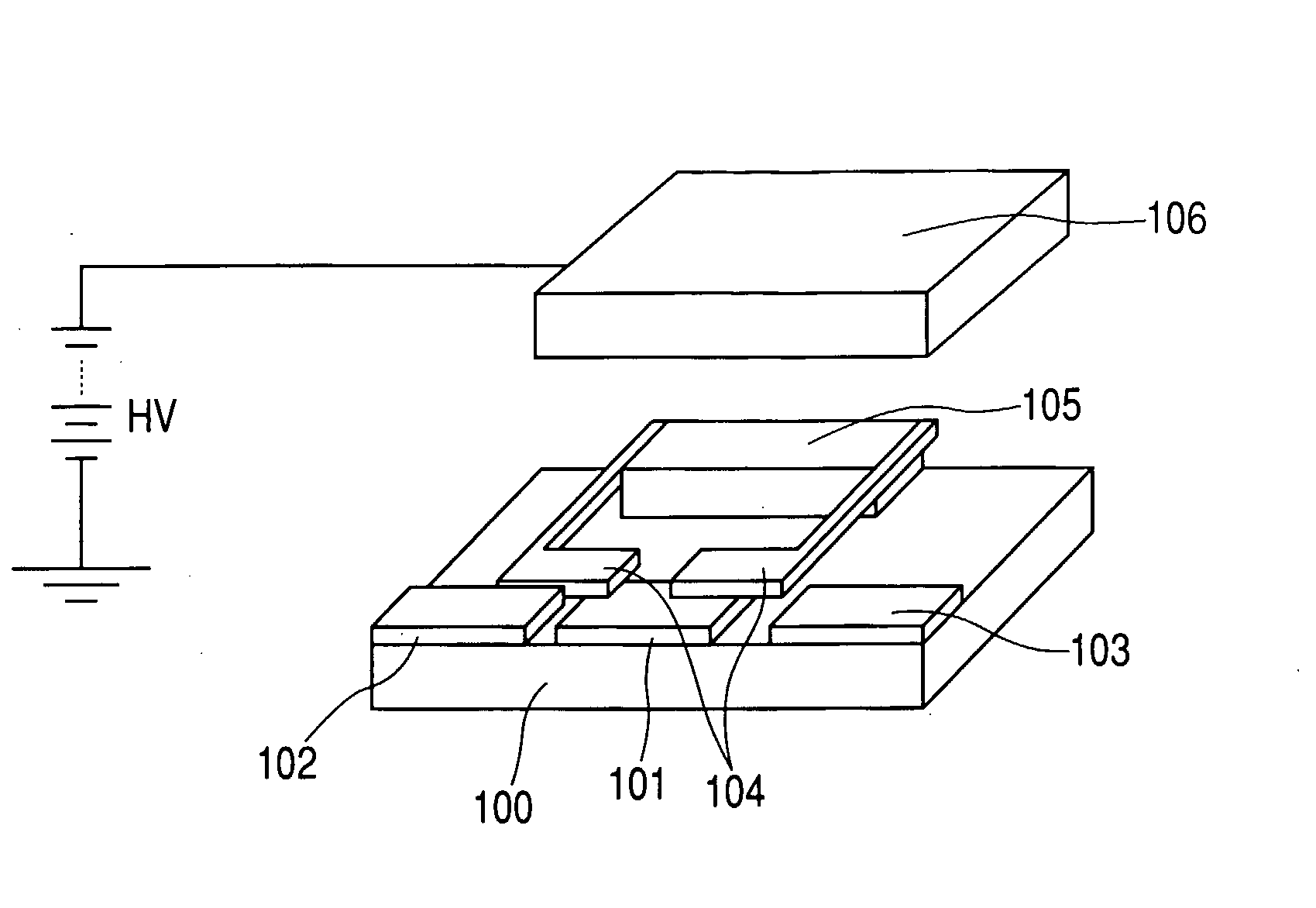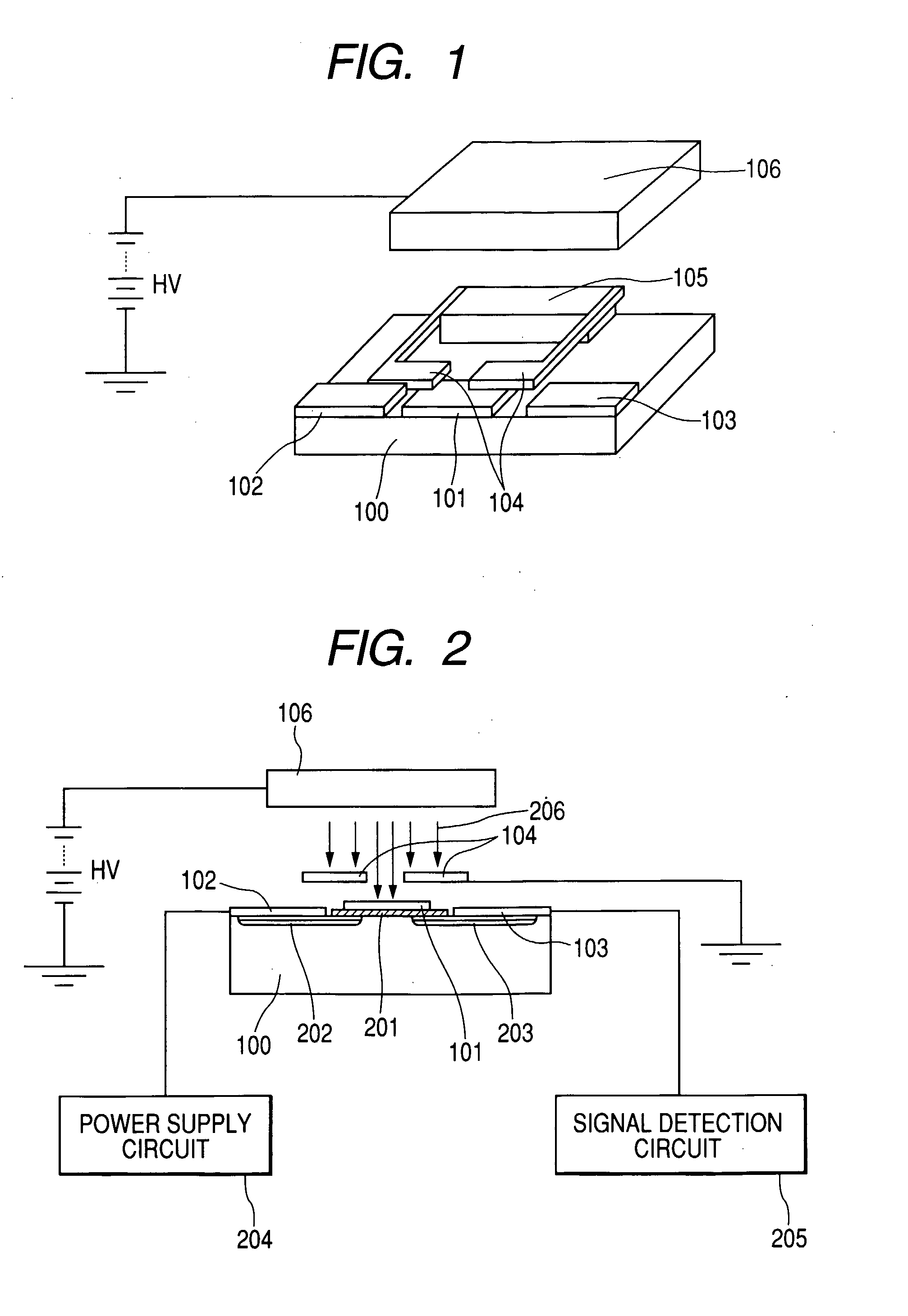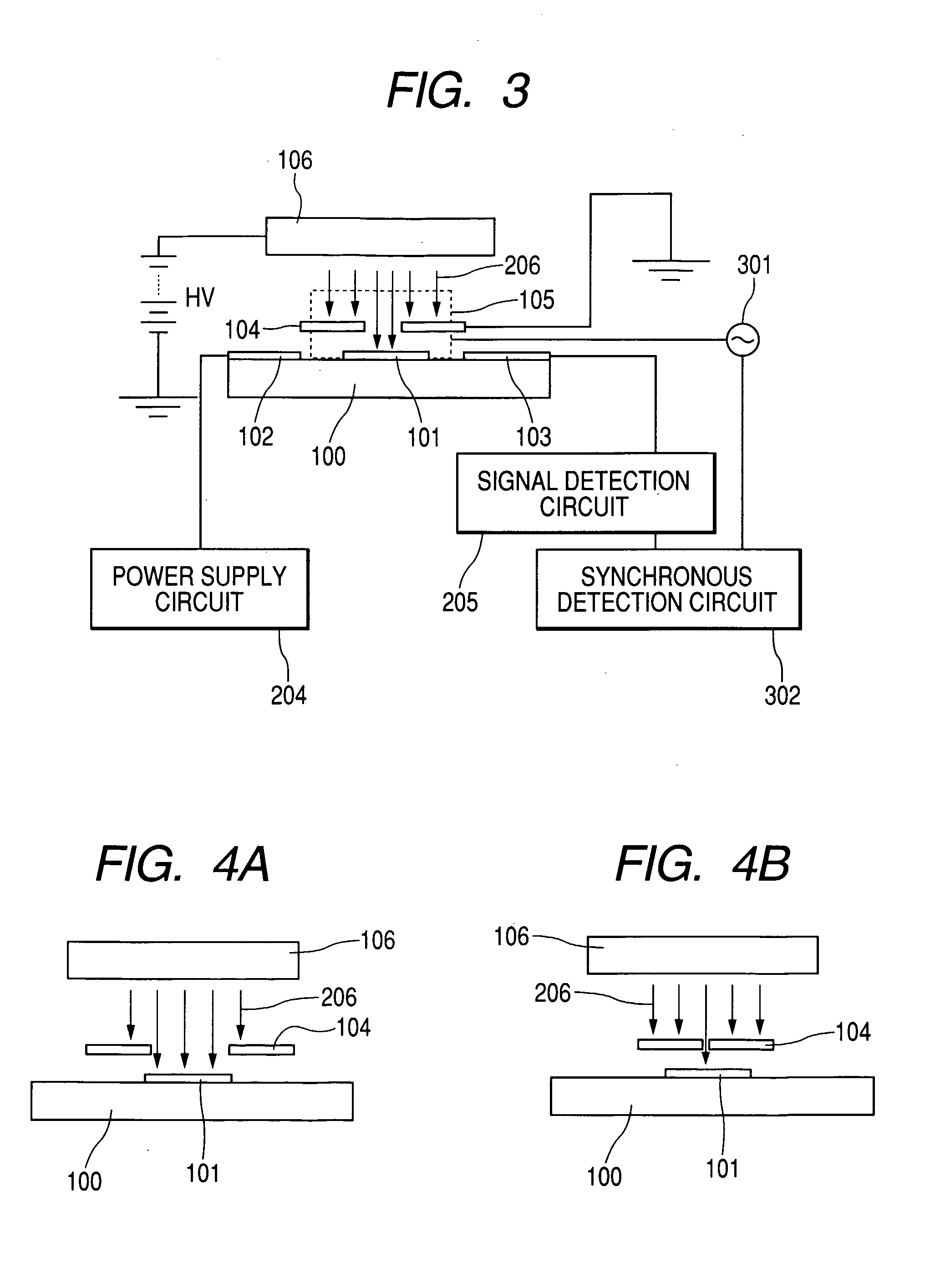Electric Potential Measuring Instrument and Image Forming Apparatus
a technology of image forming apparatus and measuring instrument, which is applied in the direction of instruments, electrographic processes, process and machine control, etc., can solve the problems of sensor accuracy disadvantage in measurement, and achieve the effect of facilitating the operation of observing the output signal that appears on the gate electrod
- Summary
- Abstract
- Description
- Claims
- Application Information
AI Technical Summary
Benefits of technology
Problems solved by technology
Method used
Image
Examples
first embodiment
[0024] The first embodiment of the invention will be described by referring to FIGS. 1 through 3. FIG. 1 shows the overall configuration of this embodiment of electric potential sensor. Referring to FIG. 1, a signal detection electrode 101, which is a gate electrode, a source electrode 102 and a drain electrode 103 are formed on the surface of a plate-like semiconductor substrate 100 typically made of silicon (Si). An object of measurement 106 is arranged above and vis-à-vis the signal detection electrode 101 and a chopper 104 that is driven to oscillate periodically and a drive mechanism 105 for driving the chopper to oscillate are arranged on the substrate 100 and between the detection electrode 101 and the object of measurement 106.
[0025]FIG. 2 is a schematic cross sectional view of the electric potential sensor of the first embodiment, showing the structure of the substrate 100 and its surroundings in detail when the chopper 104 of the electric potential sensor is in a neutral ...
second embodiment
[0033] Now, the second embodiment of the present invention will be described by referring to FIGS. 5 and 6. This second embodiment is characterized in that a plurality of field effect type transistors and a plurality of choppers for modulating lines of electric force are formed on a same substrate and each of the field effect type transistors and each of the choppers have respective configurations same as those of their counterparts of the first embodiment.
[0034] A technique for improving the detection sensitivity of an electric potential sensor is to increase the surface area of the detection electrode. However, as the surface area of the detection electrode is increased, the chopper for modulating lines of electric force also needs to be made large. Then, there arises problems such as a high power consumption rate and a low drive frequency. The detection sensitivity of an electric potential sensor can be improved by arranging a large number of small detection electrodes so as to ...
third embodiment
[0043] The number of lines of electric force that arrive at the detection electrode, which is a gate electrode of a transistor, is modulated in each of the above-described embodiments (so as to change the S in the above formula (2)). However, the coupling capacitance can be made to change by modulating the distance x between the object of measurement and the detection electrode as may be seen from the above formula (2). Such a technique is used in the third embodiment of the invention. FIG. 7 is a schematic illustration of the third embodiment of the present invention, which is an electric potential sensor, showing the configuration thereof.
[0044]FIG. 7 shows how the electric potential sensor is arranged relative to surface 1201, which is the object of measurement. In FIG. 7, numeral 1202 denotes a case for containing the electric potential sensor that covers a top portion of a swinging body 1104 except the parts of the detection electrodes. The case is made of an electrically cond...
PUM
 Login to View More
Login to View More Abstract
Description
Claims
Application Information
 Login to View More
Login to View More - R&D
- Intellectual Property
- Life Sciences
- Materials
- Tech Scout
- Unparalleled Data Quality
- Higher Quality Content
- 60% Fewer Hallucinations
Browse by: Latest US Patents, China's latest patents, Technical Efficacy Thesaurus, Application Domain, Technology Topic, Popular Technical Reports.
© 2025 PatSnap. All rights reserved.Legal|Privacy policy|Modern Slavery Act Transparency Statement|Sitemap|About US| Contact US: help@patsnap.com



